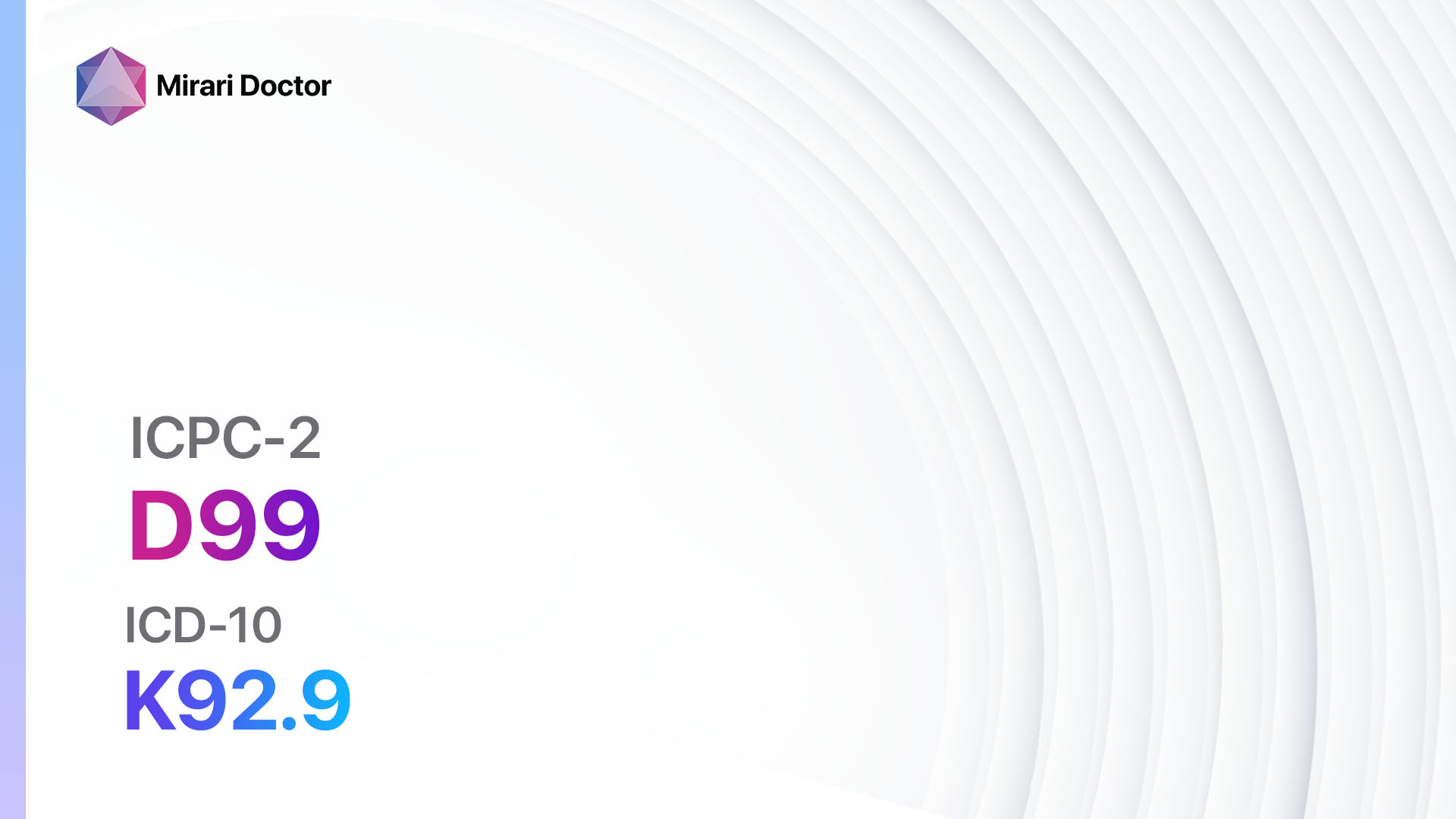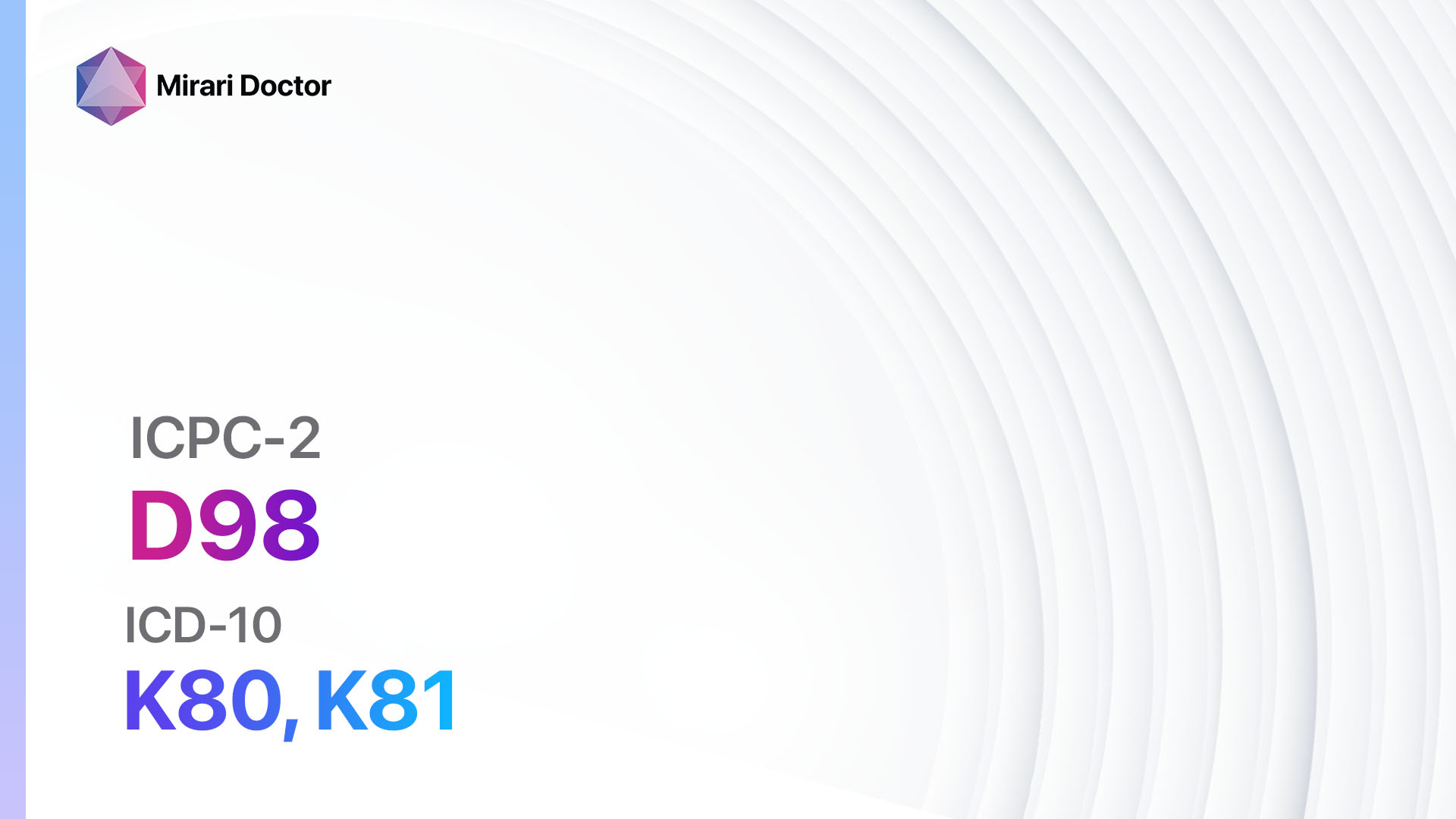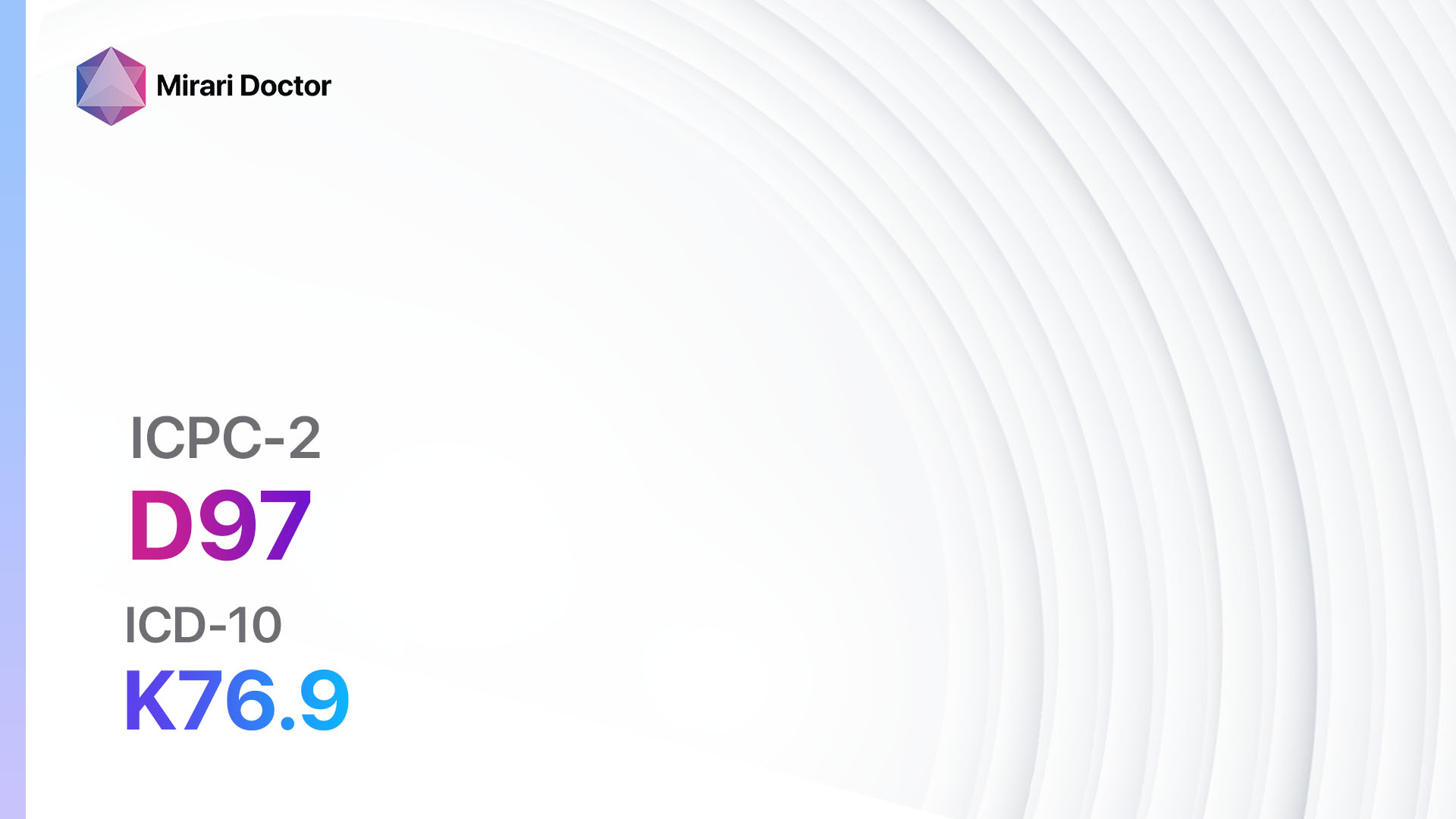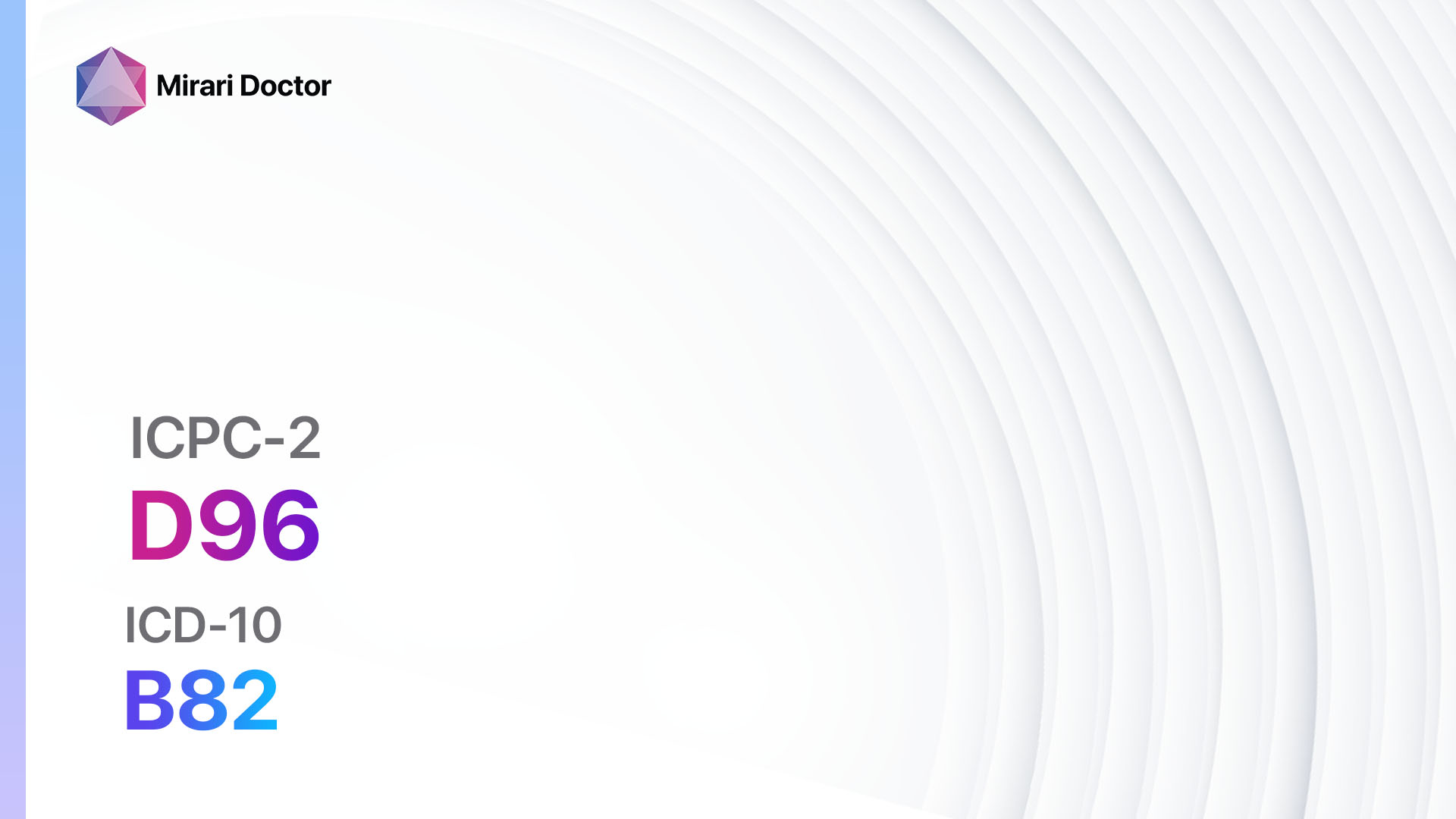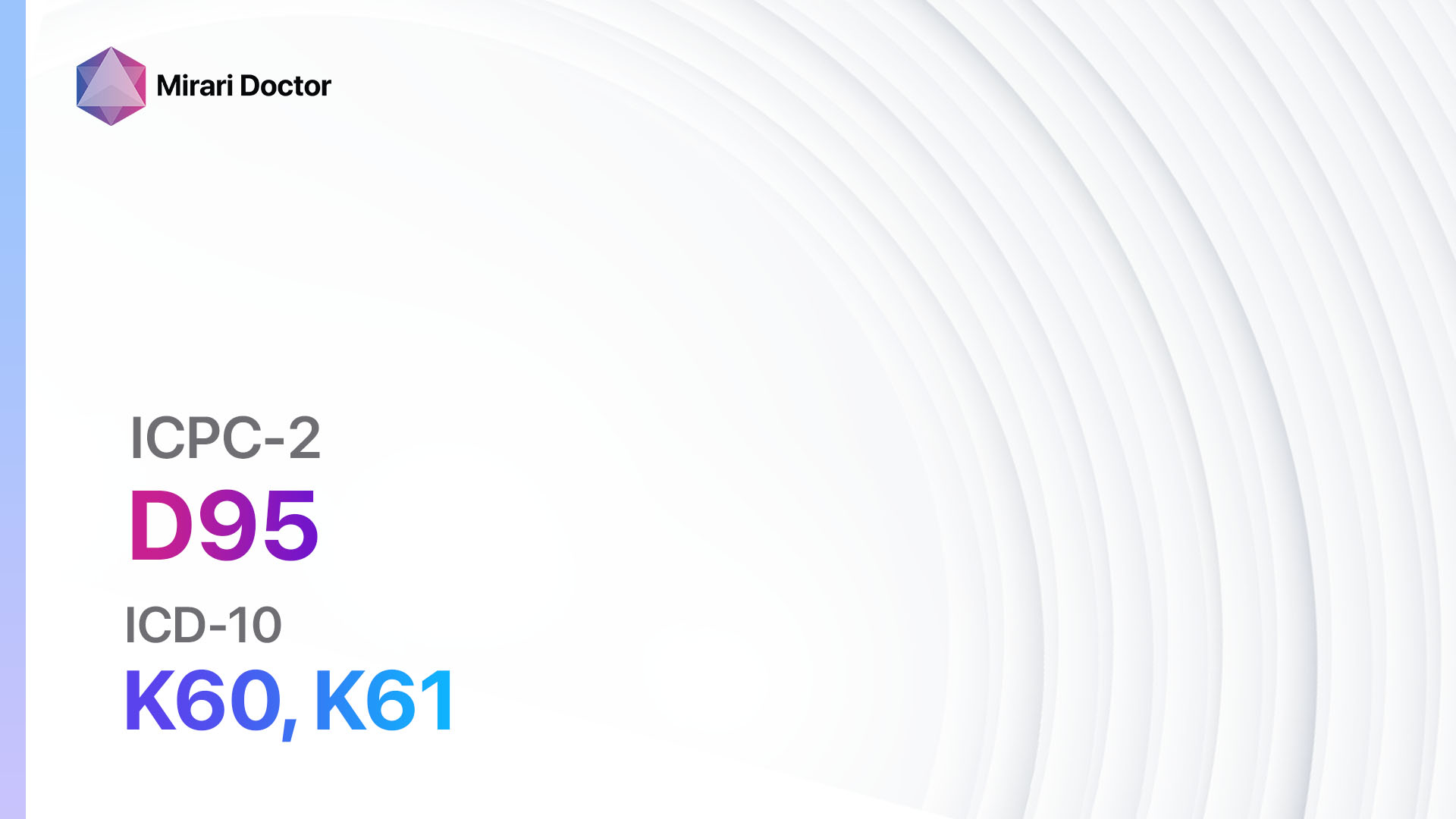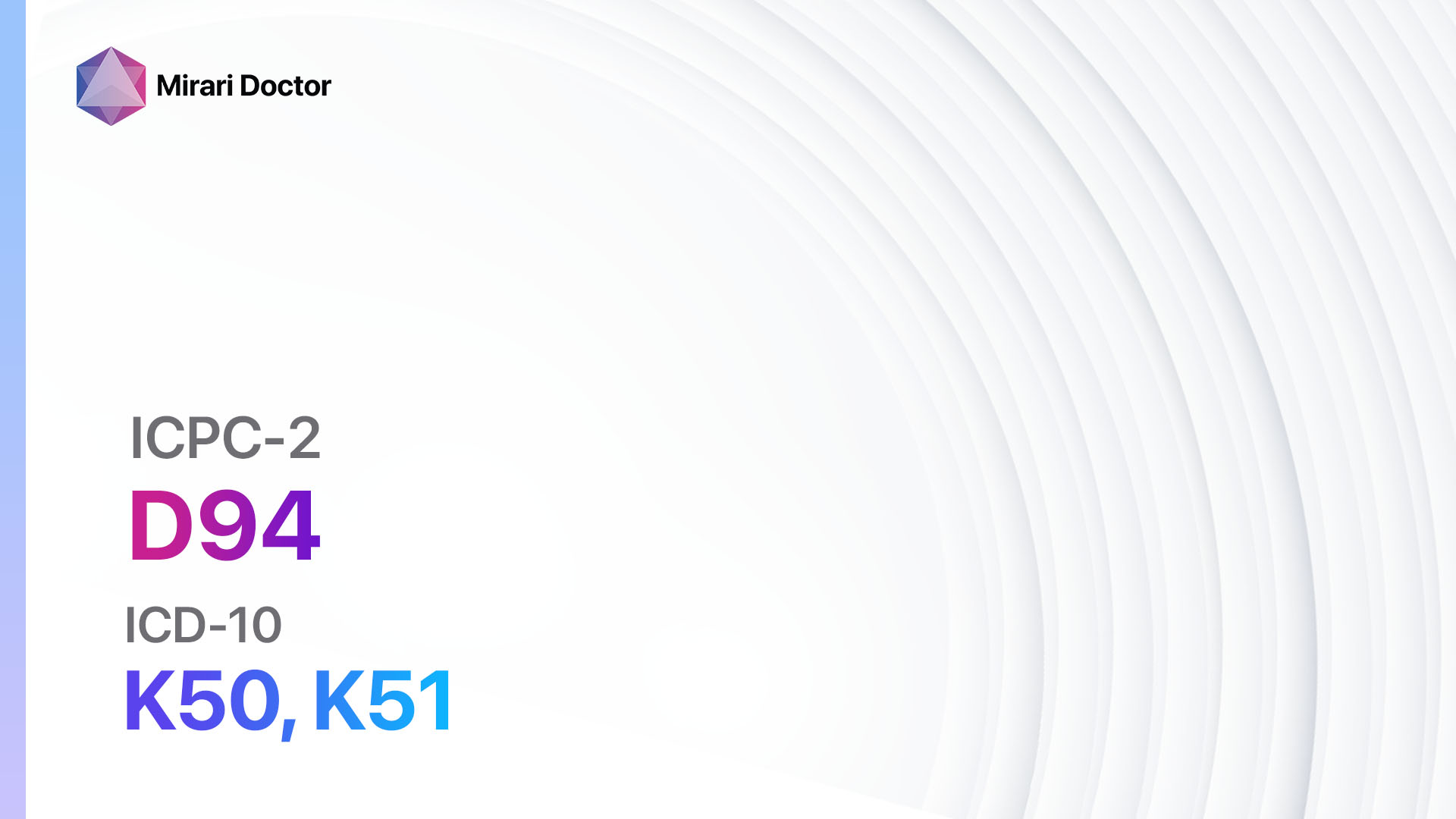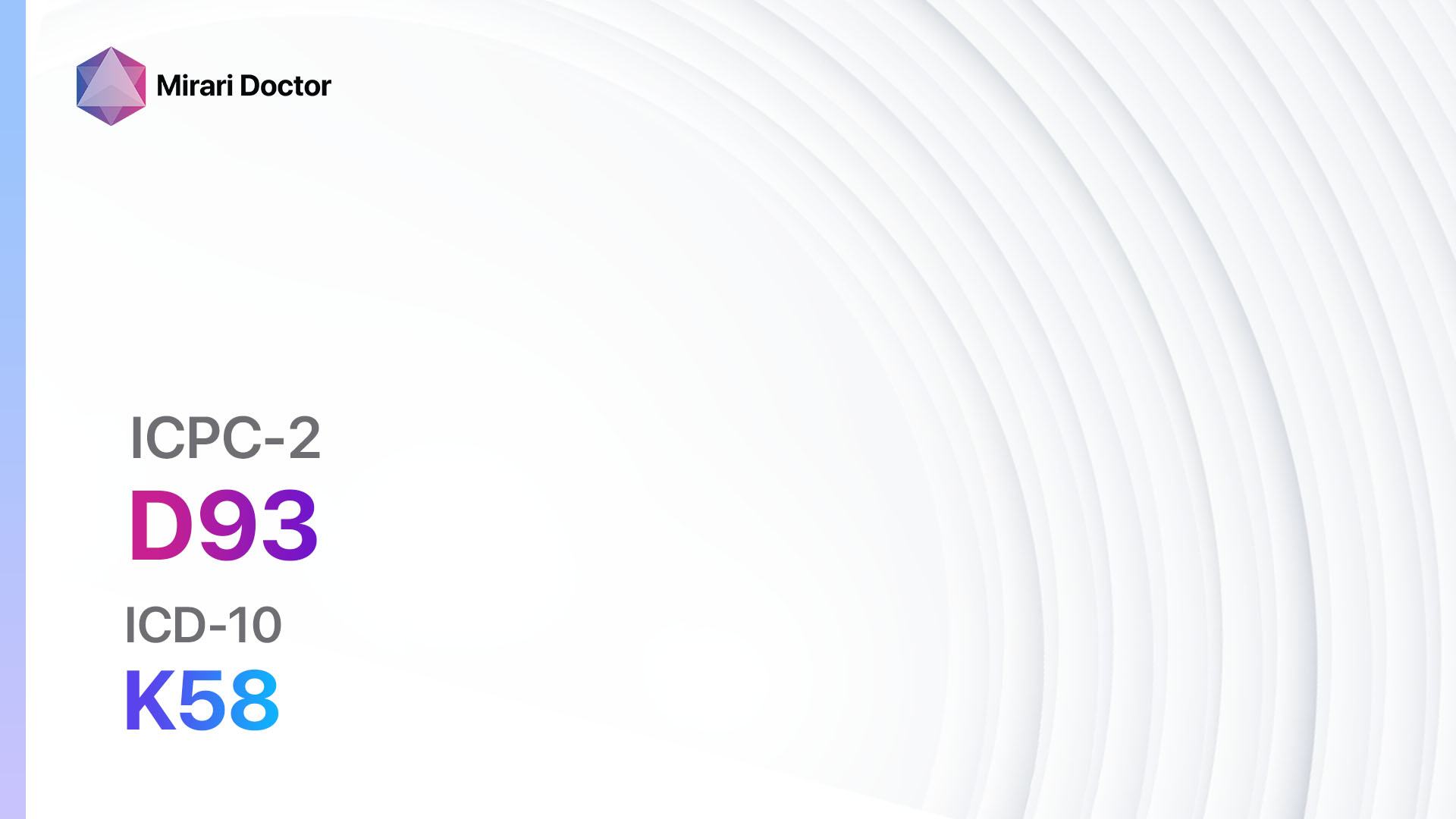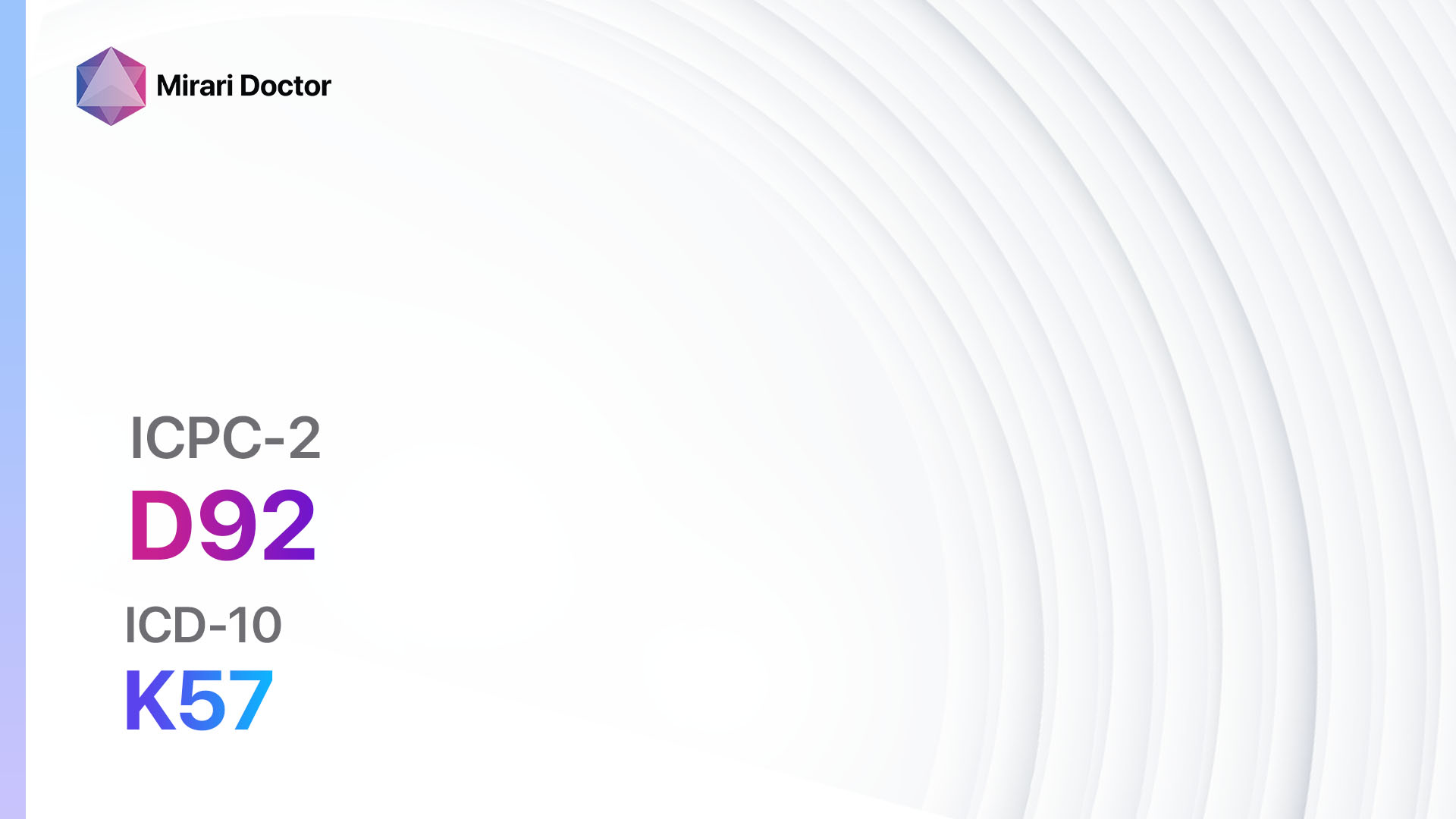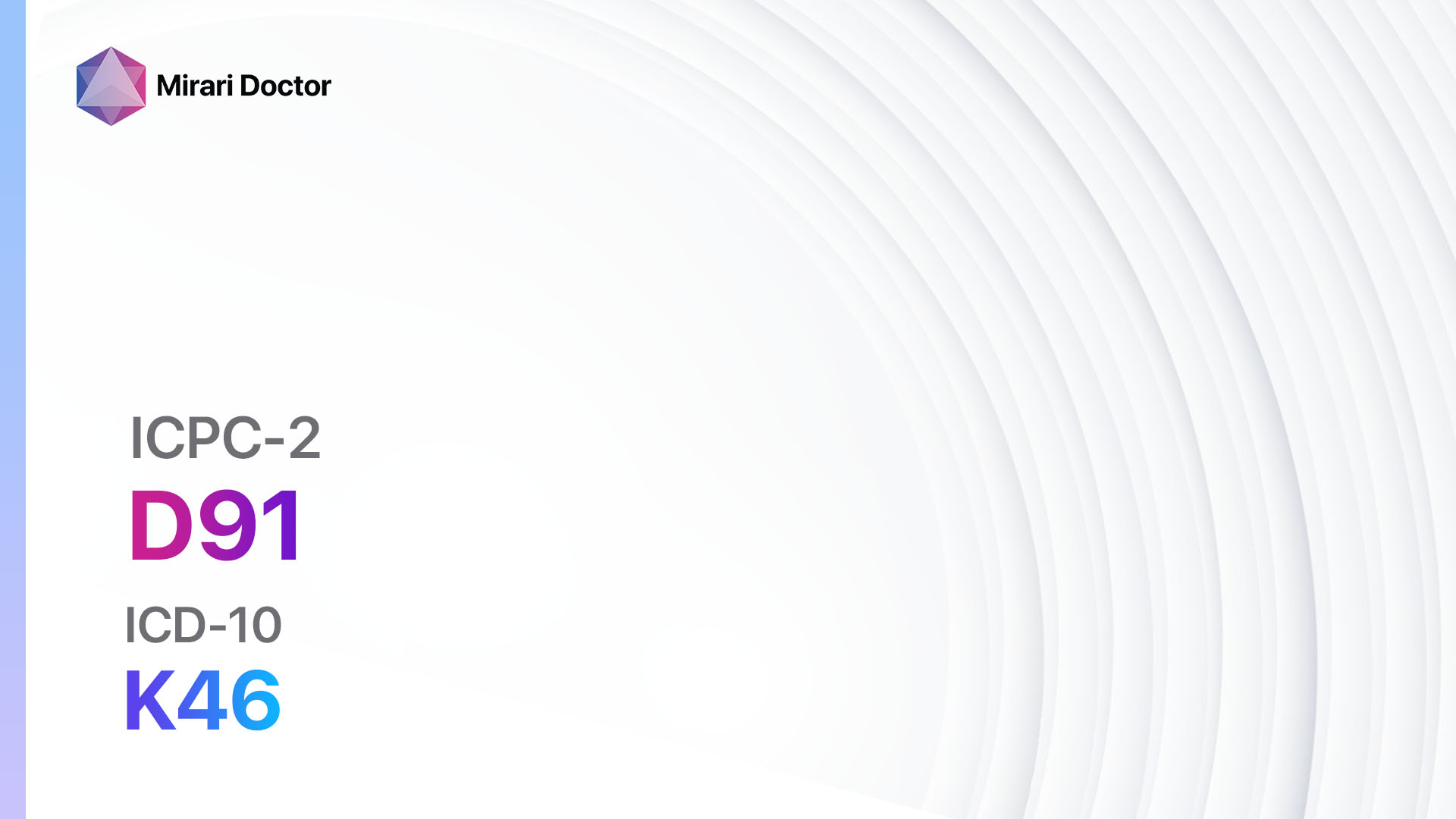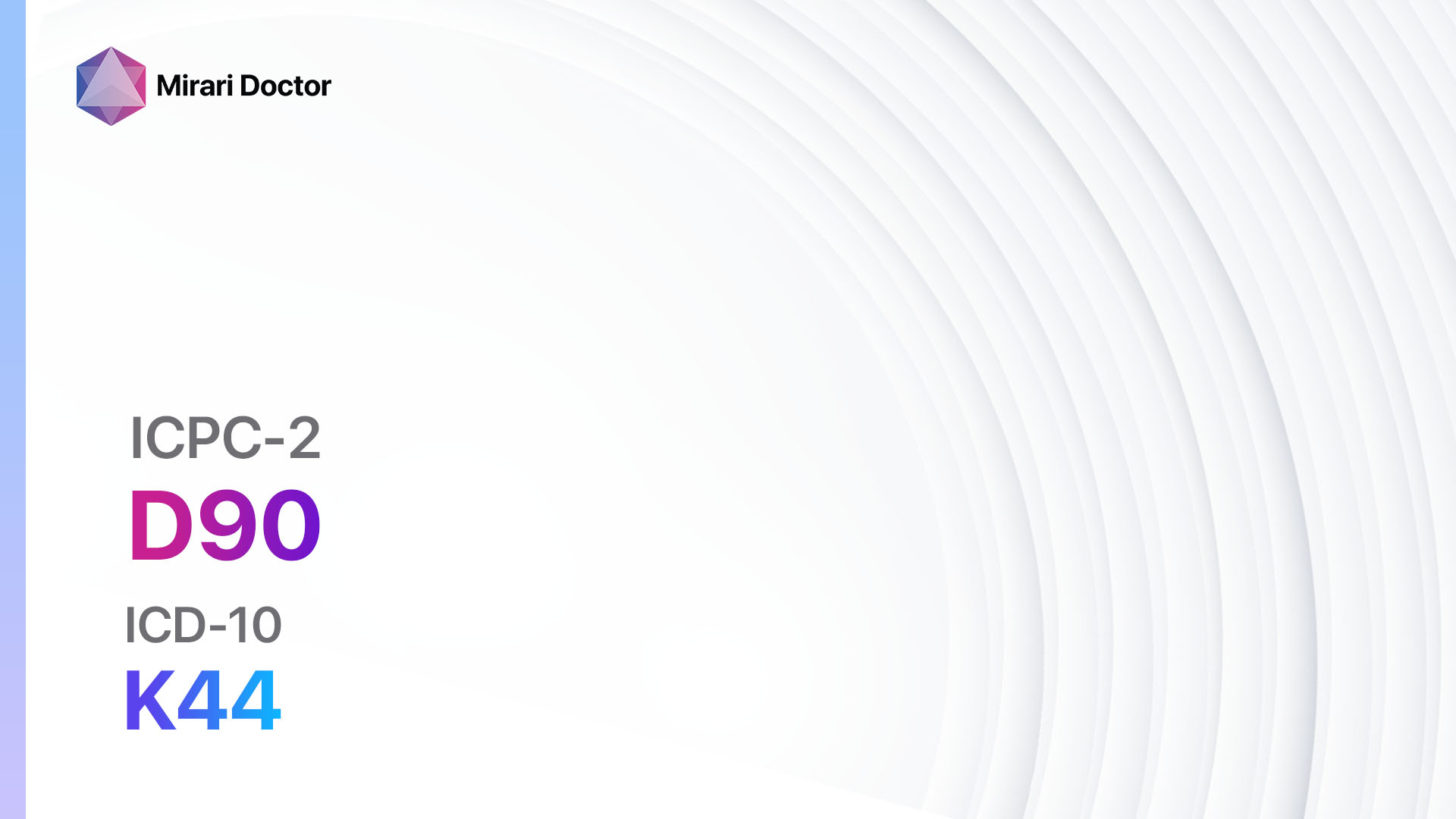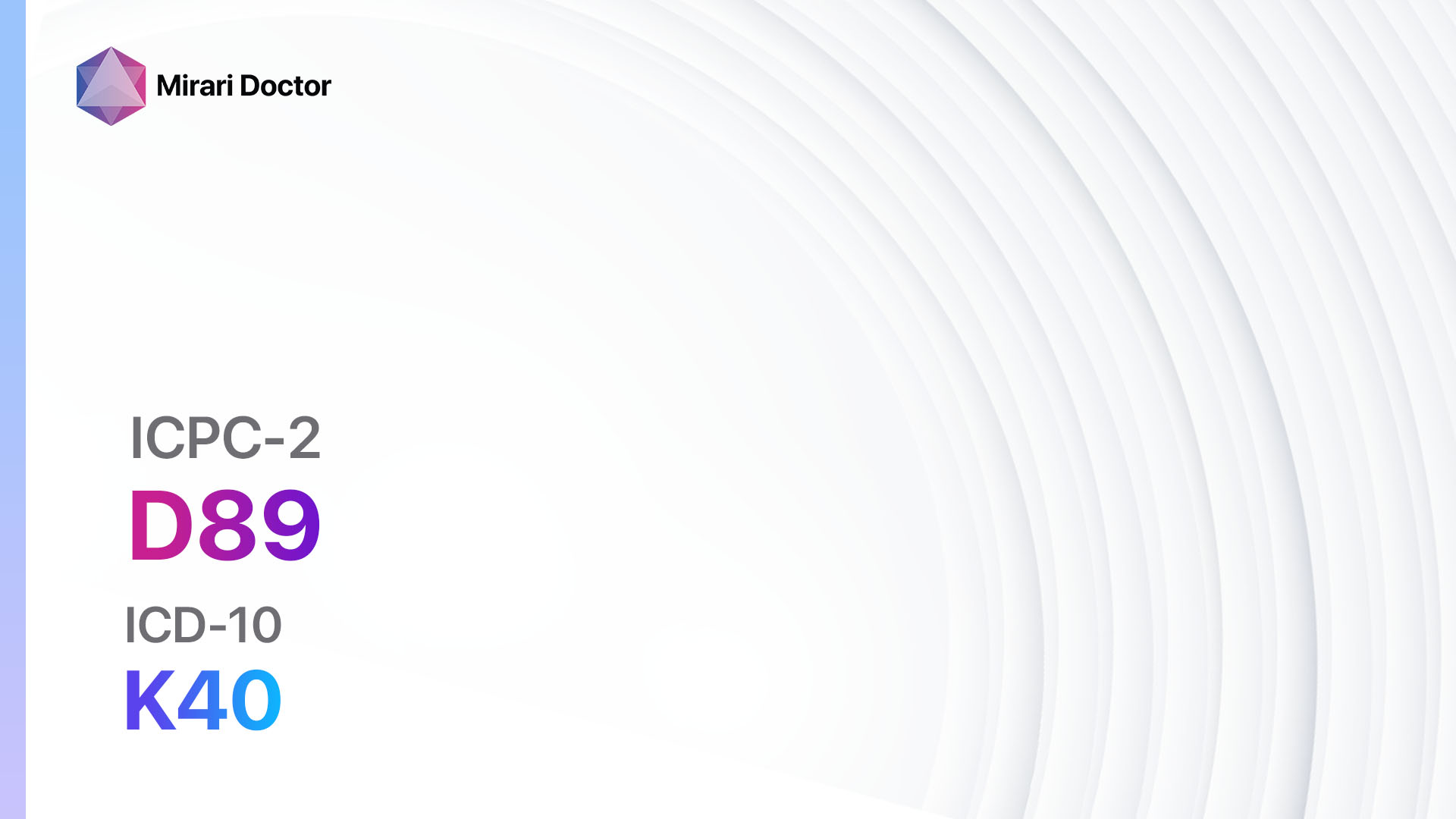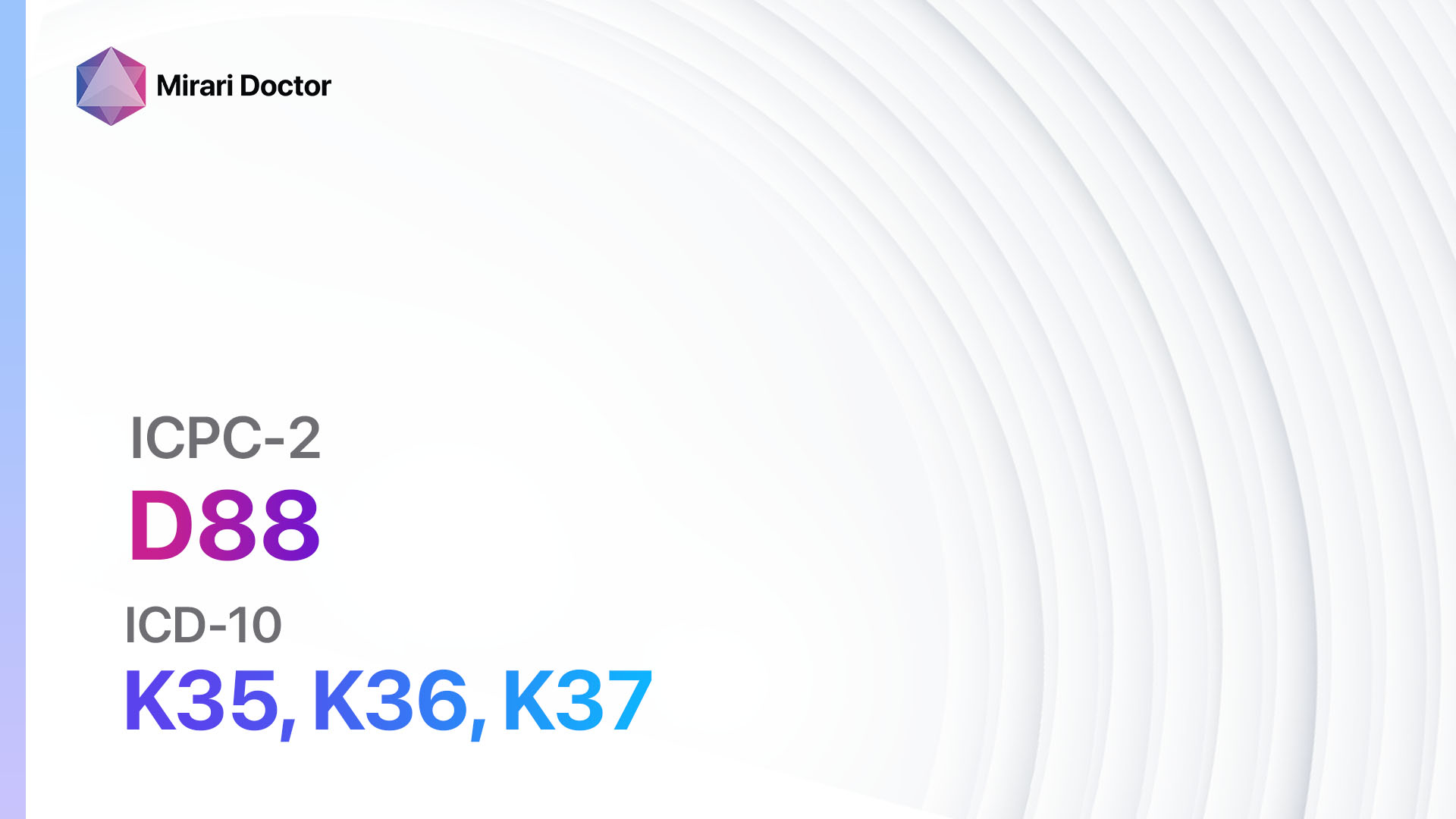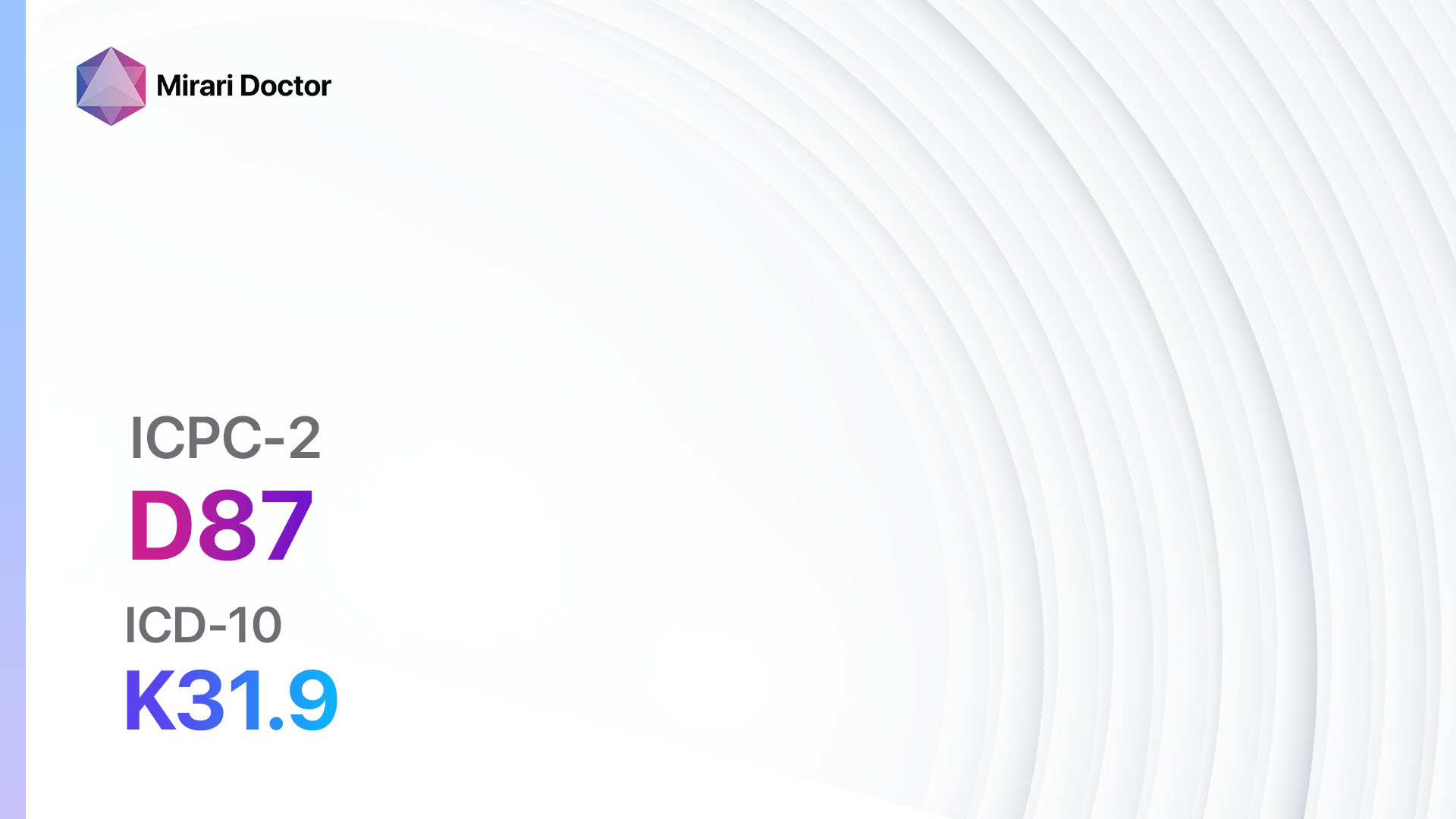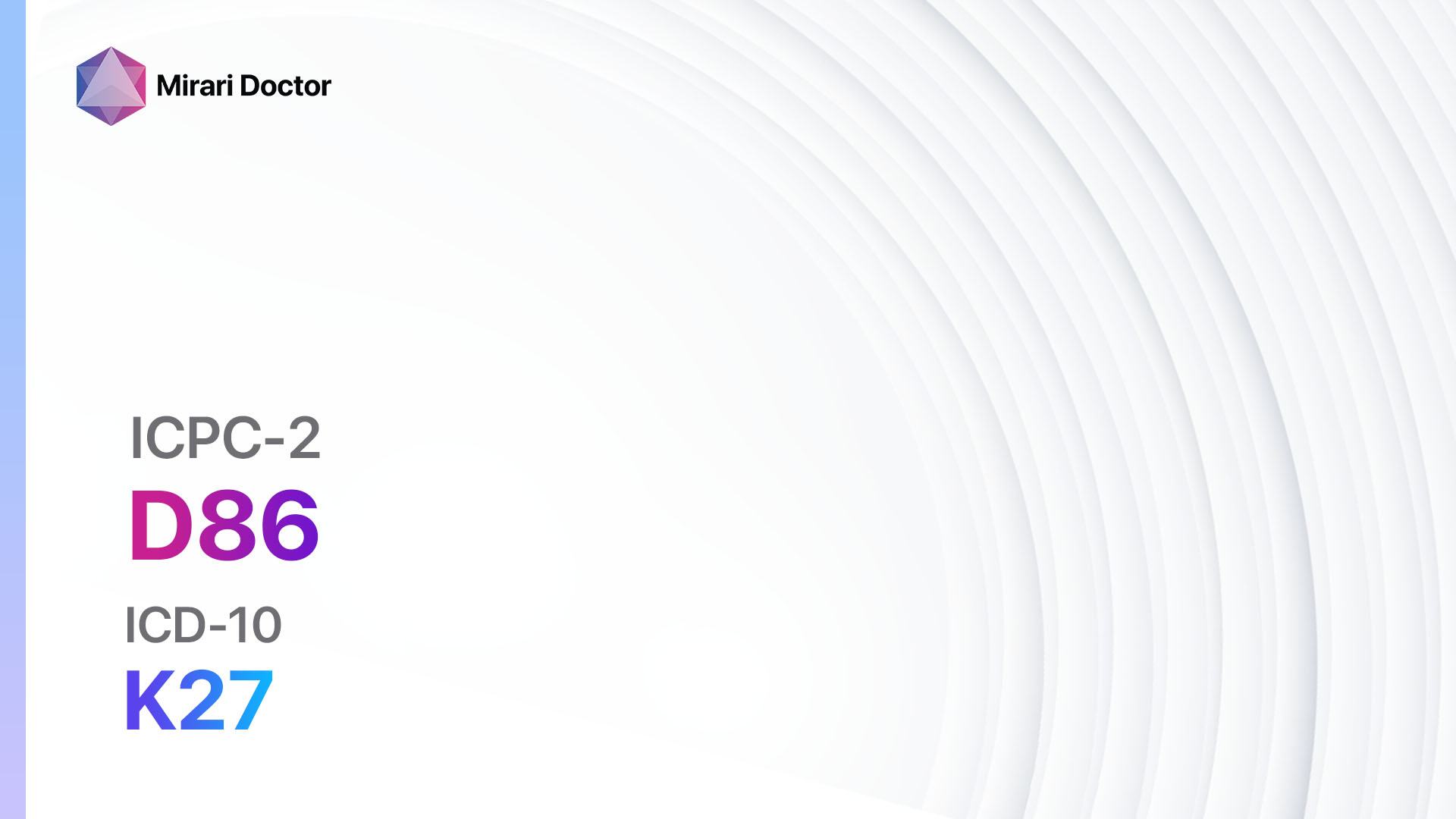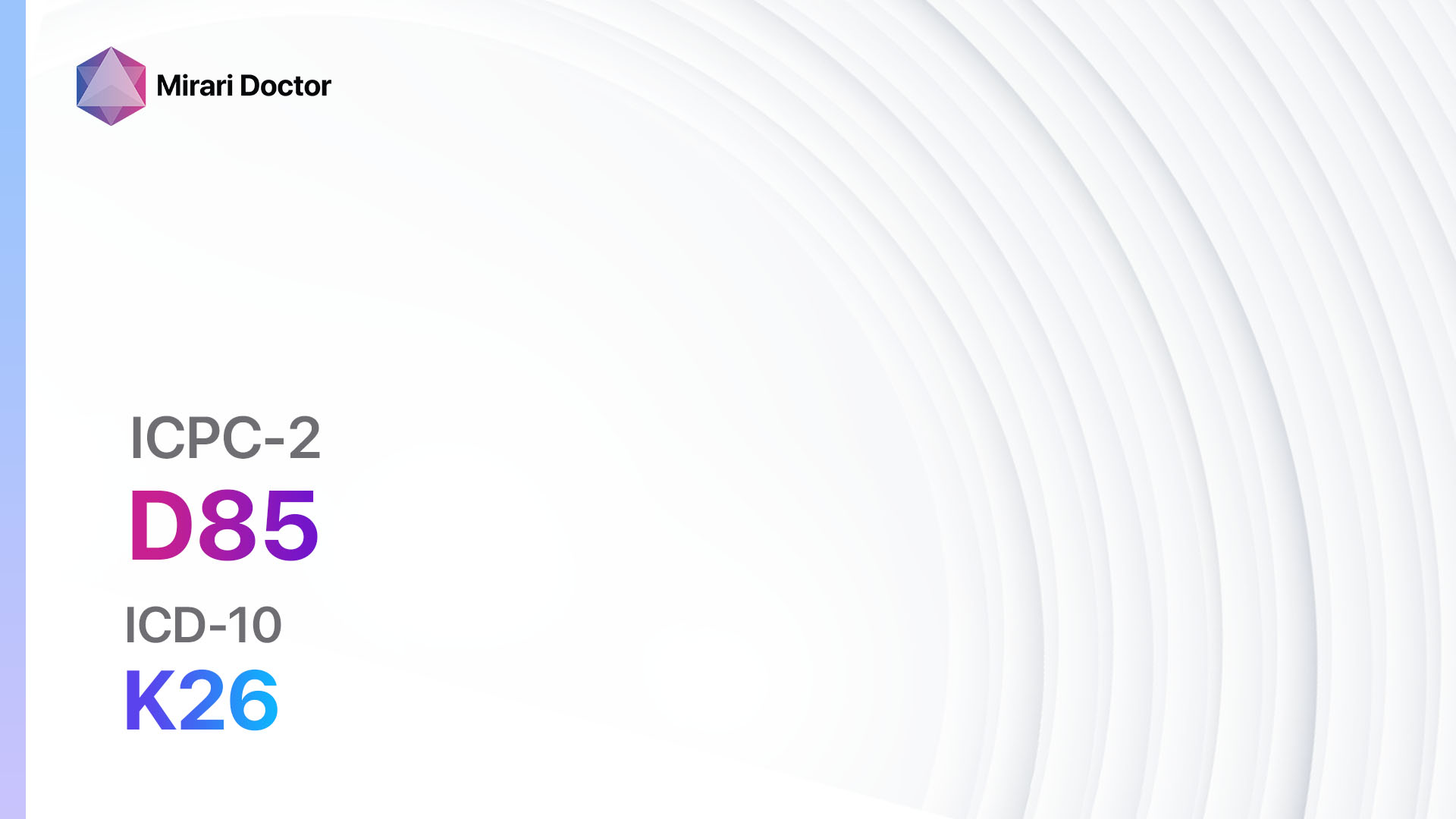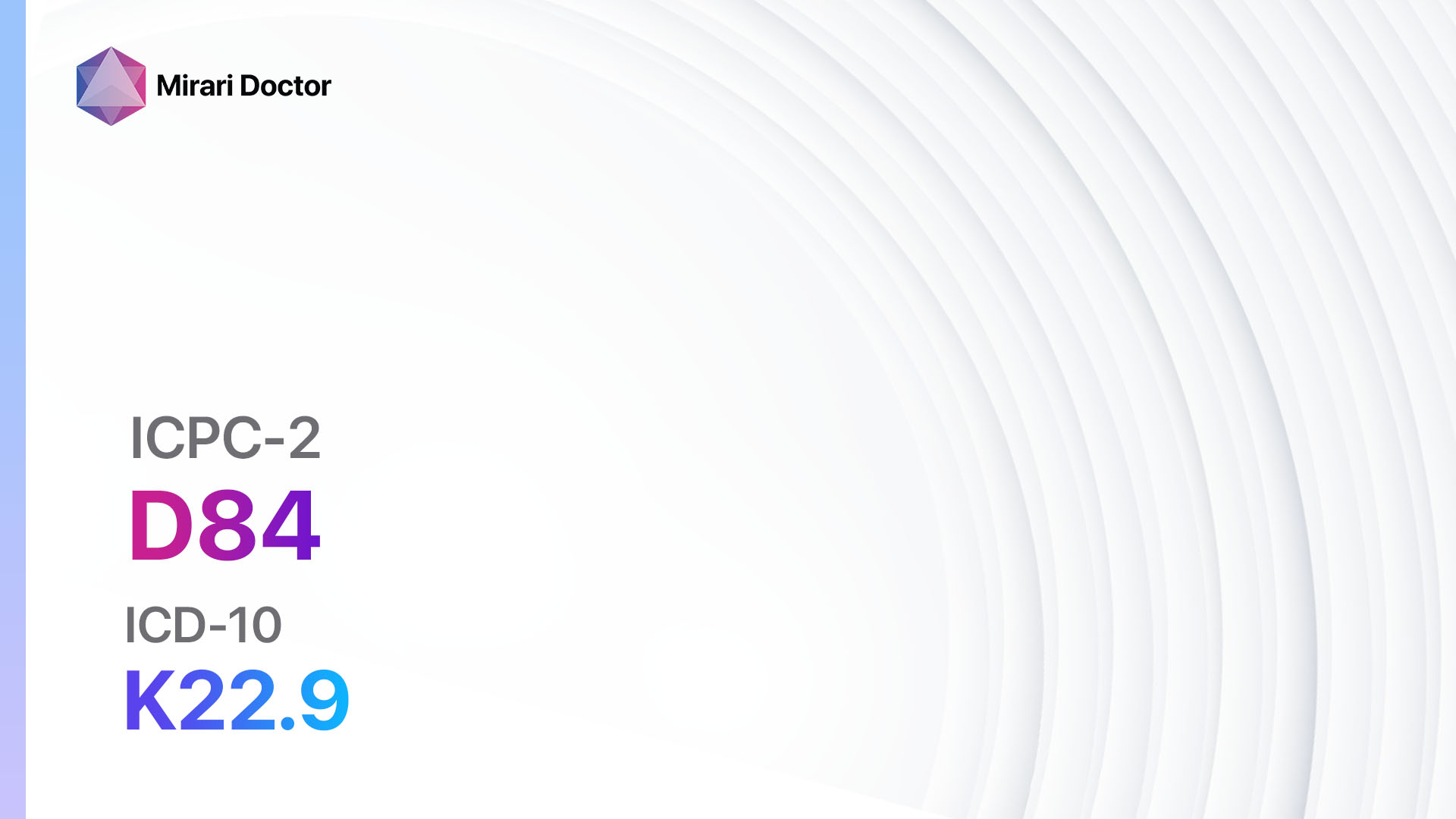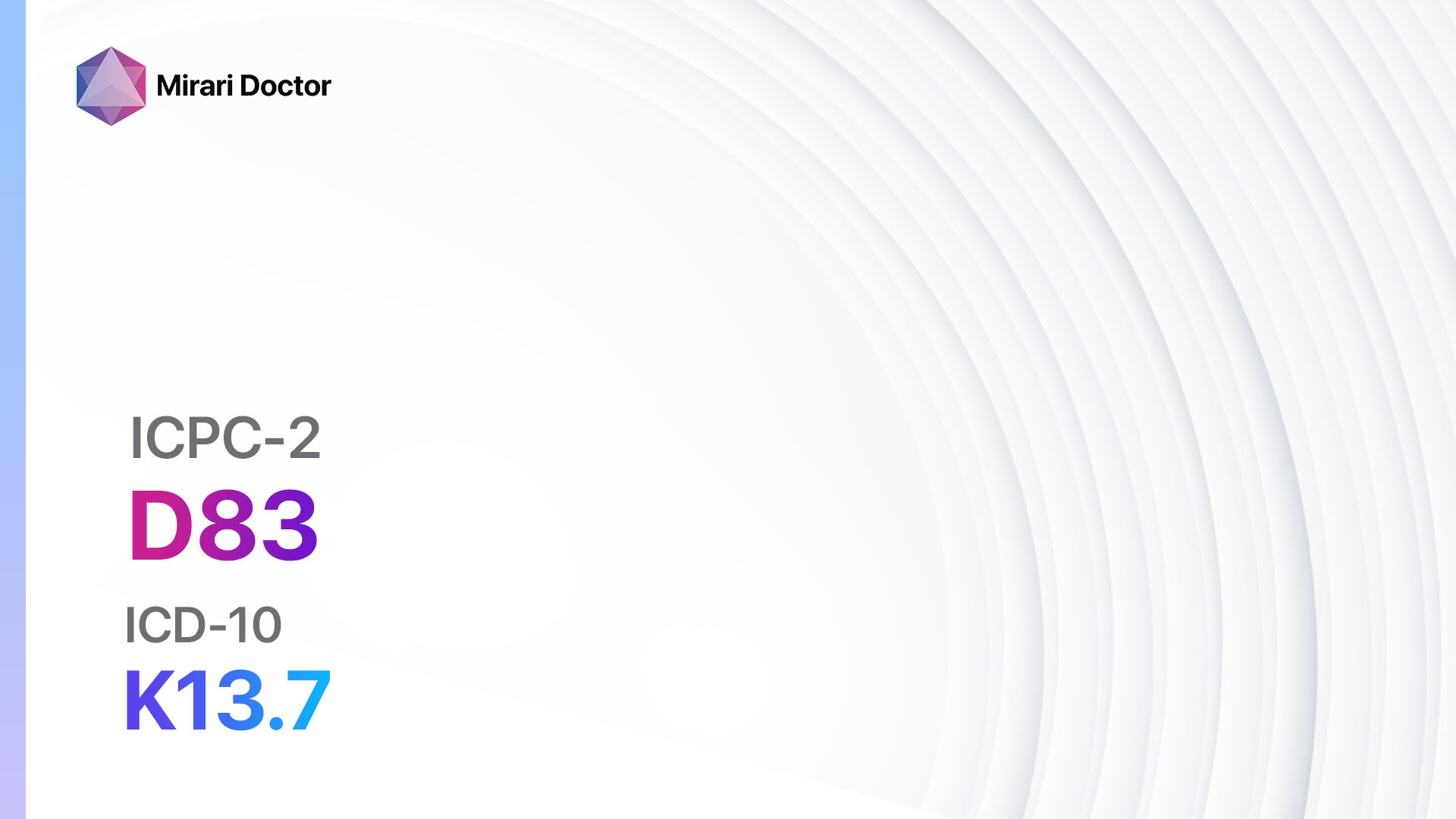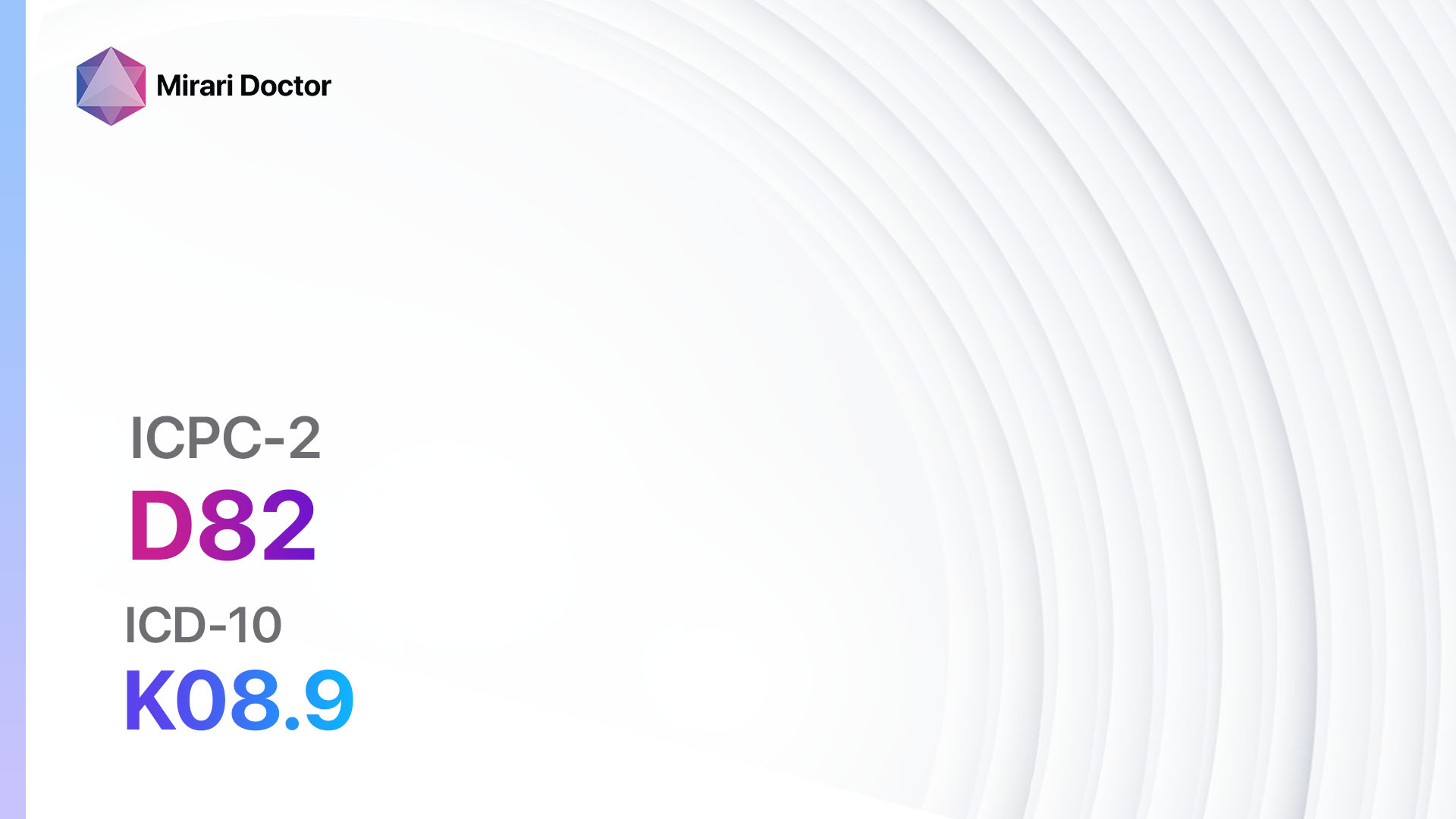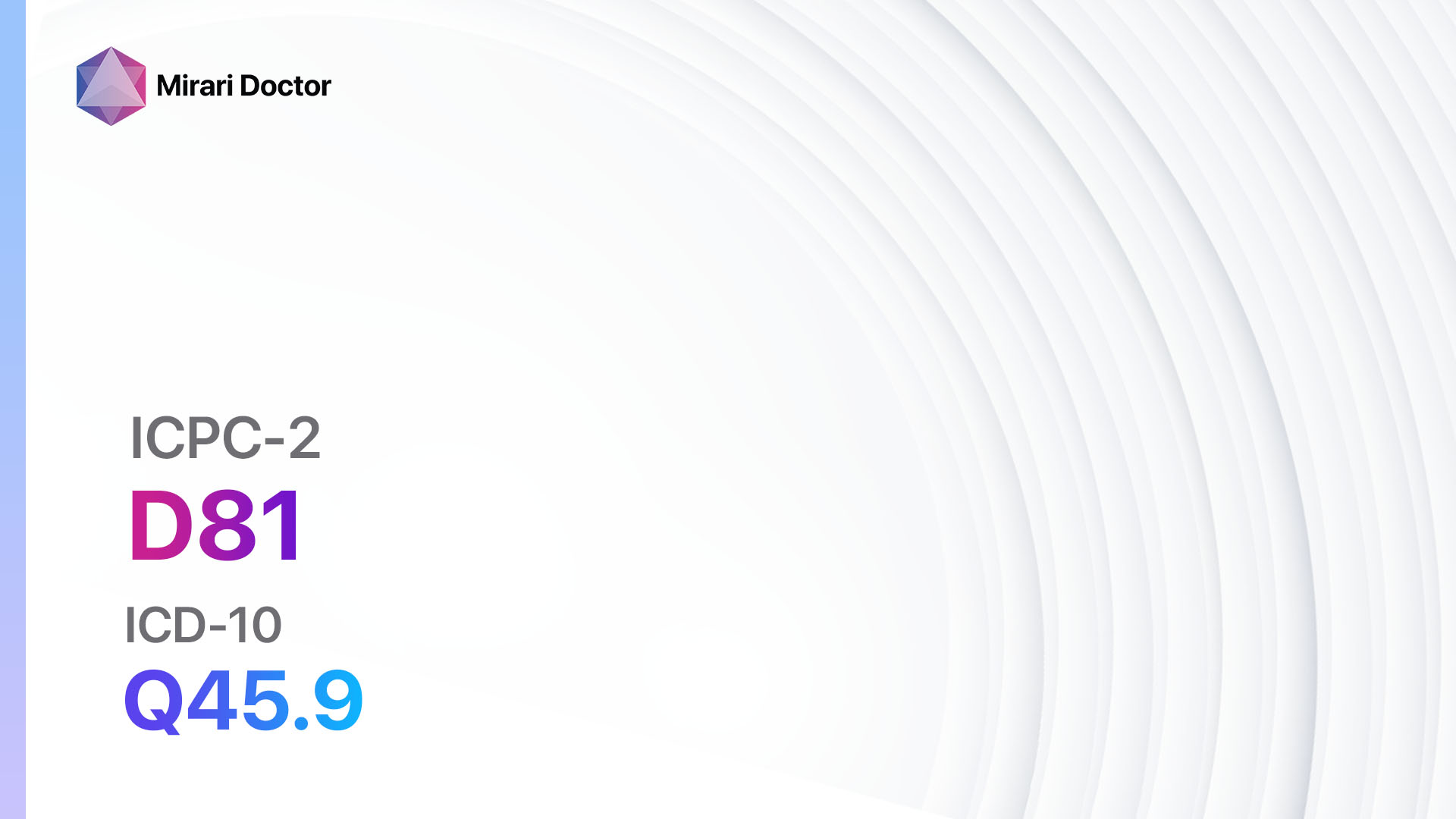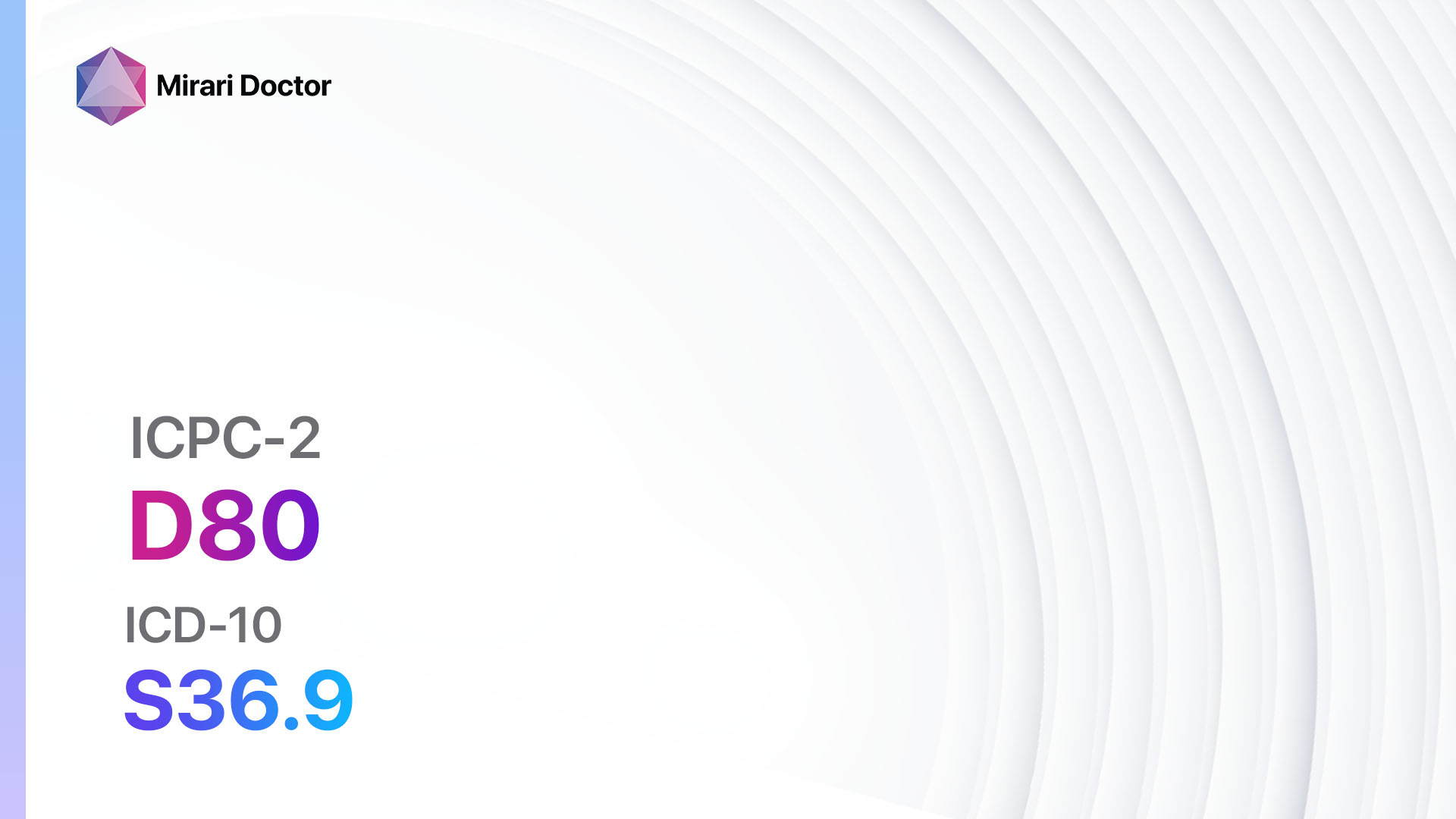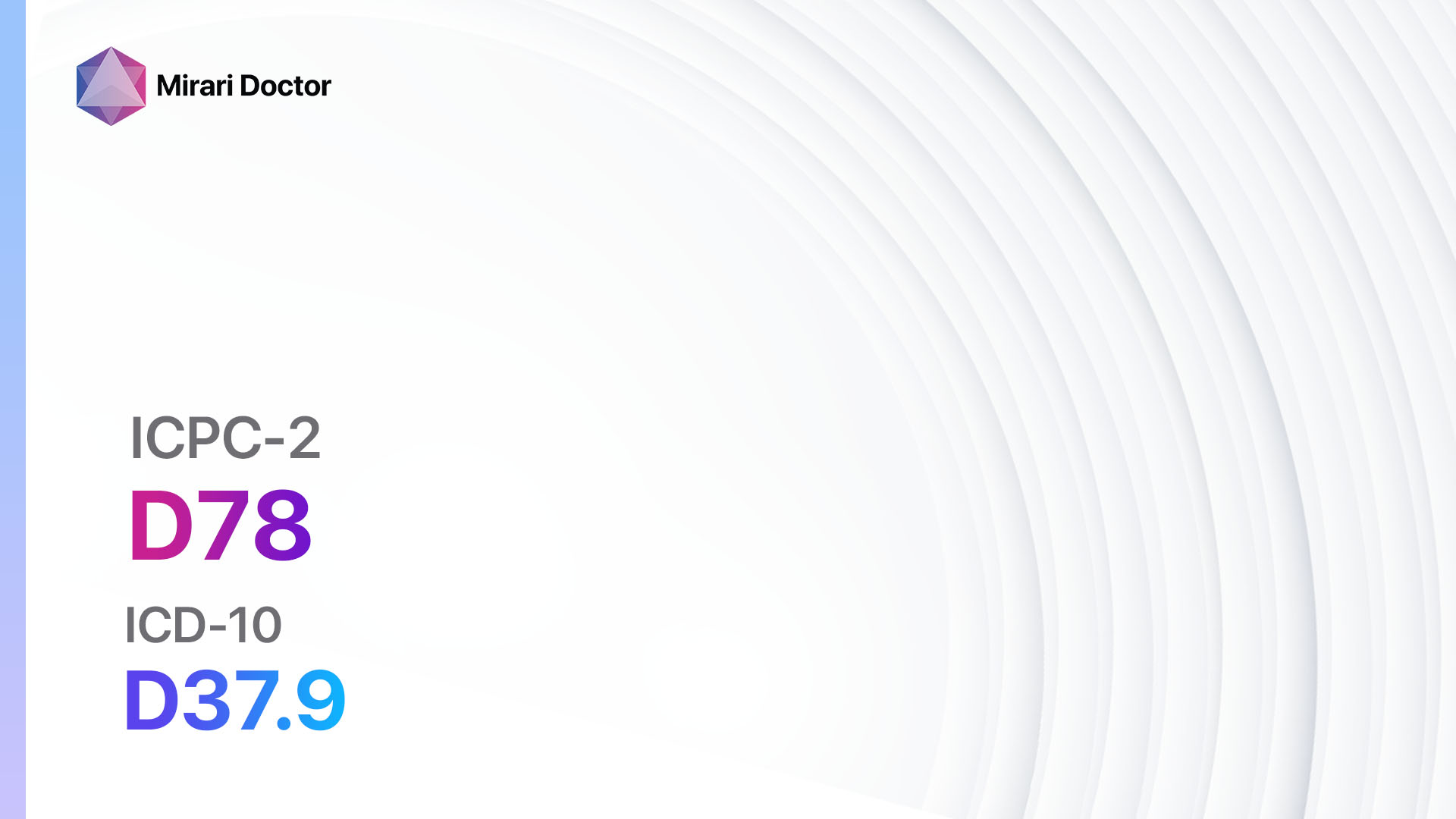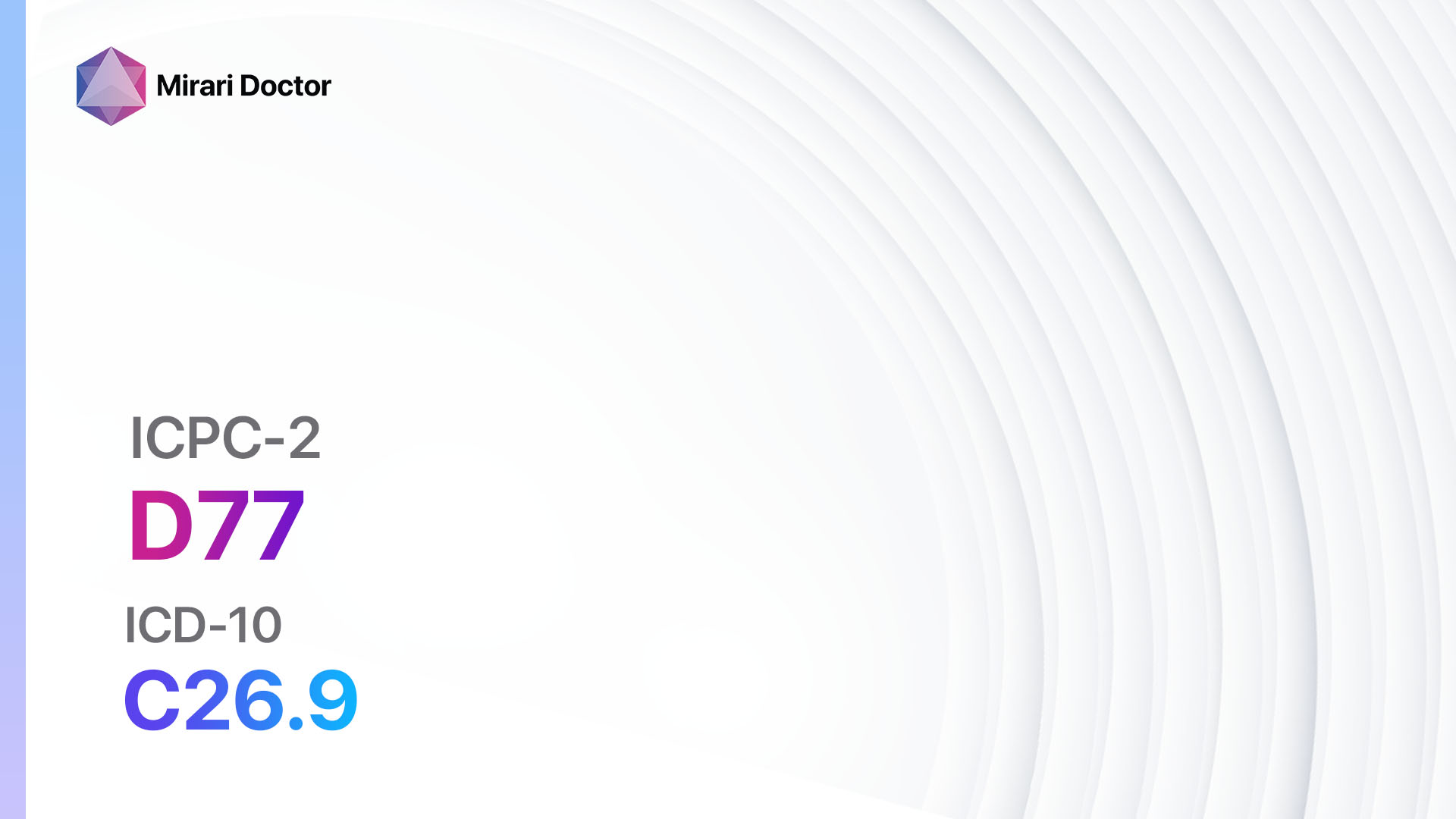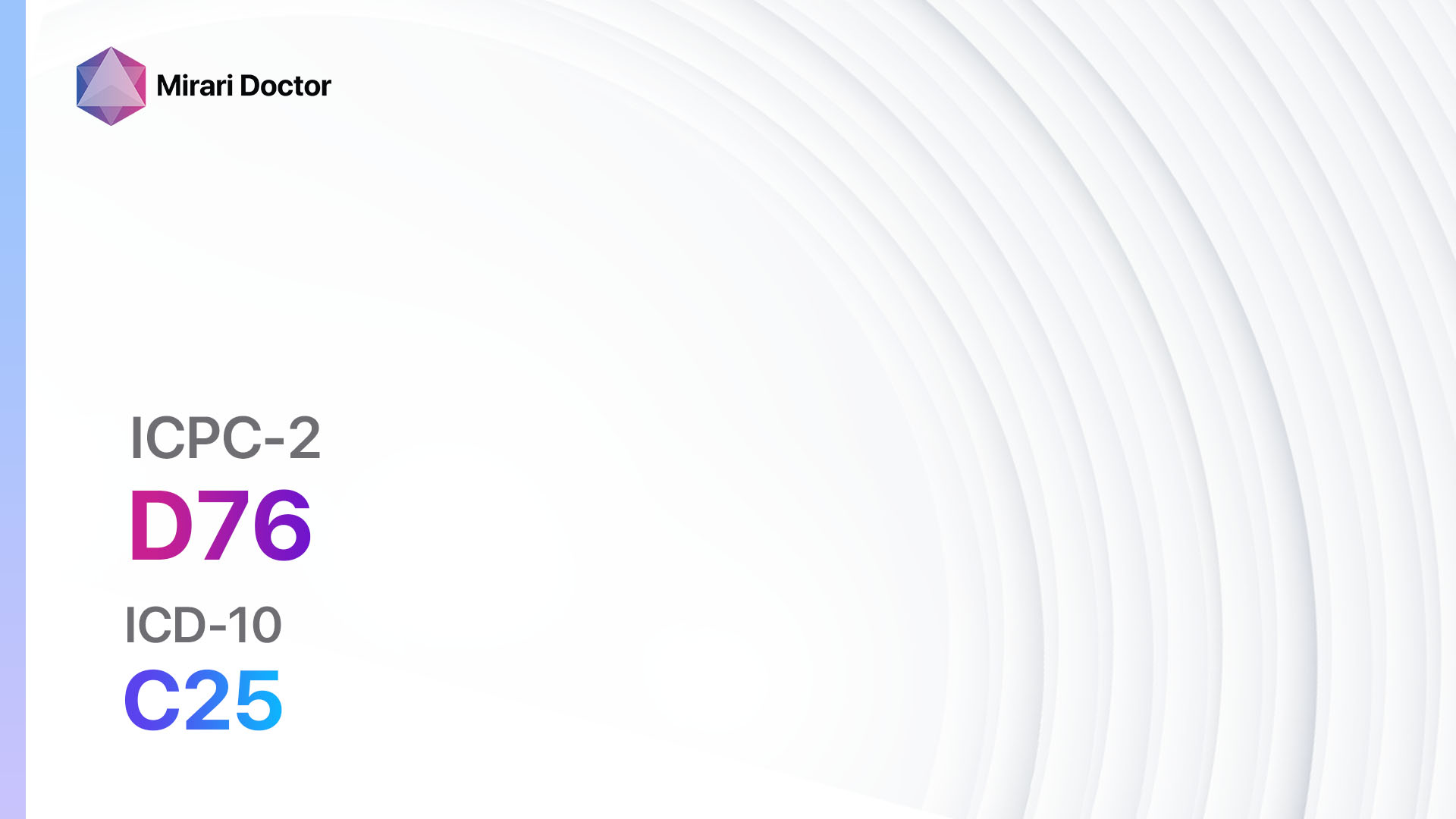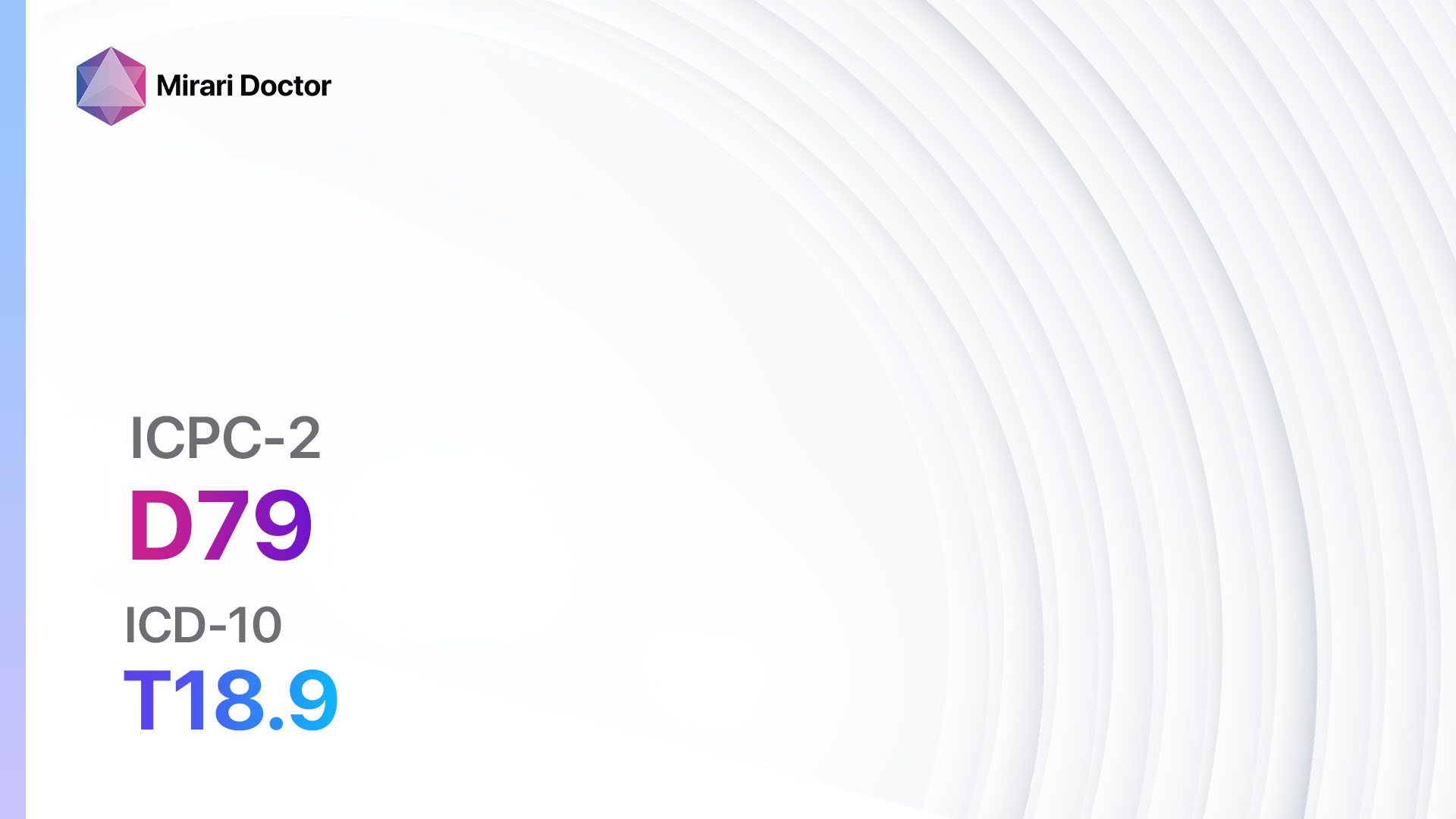
Introduction
Foreign bodies in the digestive system refer to any object that is ingested and becomes lodged in the gastrointestinal tract. This can occur in both children and adults and can lead to various complications if not promptly diagnosed and treated. The aim of this guide is to provide a comprehensive overview of the symptoms, causes, diagnostic steps, possible interventions, and patient education related to foreign bodies in the digestive system.[1][2]
Codes
- ICPC-2 Code: D79 Foreign body digestive system[3]
- ICD-10 Code: T18.9 Foreign body in alimentary tract, part unspecified[4]
Symptoms
- Abdominal pain: Sharp or cramping pain in the abdomen.[5]
- Difficulty swallowing: Sensation of food getting stuck in the throat or chest.[6]
- Vomiting: Persistent vomiting, especially after eating or drinking.[7]
- Gastrointestinal bleeding: Blood in vomit or stool.[8]
- Change in bowel habits: Diarrhea or constipation.[9]
- Respiratory symptoms: Coughing, wheezing, or shortness of breath.[10]
Causes
- Accidental ingestion: Swallowing small objects, such as coins, toys, or bones.
- Intentional ingestion: Pica disorder, where individuals have an appetite for non-food items.
- Dental or medical procedures: Swallowing of dental appliances, endoscopic instruments, or other medical devices.
Diagnostic Steps
Medical History
- Gather information about the patient’s age, sex, and medical history.
- Determine if the ingestion was accidental or intentional.
- Assess for symptoms such as abdominal pain, difficulty swallowing, vomiting, or gastrointestinal bleeding.
- Inquire about any recent dental or medical procedures.
Physical Examination
- Perform a thorough physical examination, including inspection, palpation, and auscultation of the abdomen.
- Look for signs of abdominal tenderness, distension, or abnormal bowel sounds.
- Check for any visible signs of foreign bodies in the oral cavity or throat.
Laboratory Tests
- Complete blood count (CBC): To assess for signs of infection or anemia.
- Electrolyte panel: To evaluate for any electrolyte imbalances.
- C-reactive protein (CRP): To determine if there is an inflammatory response.
- Liver function tests: To assess liver function in cases of suspected ingestion of toxic substances.
Diagnostic Imaging
- X-ray: To visualize and locate radiopaque foreign bodies, such as coins or metal objects.
- CT scan: Provides detailed images of the gastrointestinal tract to identify the location and extent of the foreign body.
- Ultrasound: Useful for detecting foreign bodies in the esophagus or stomach.
- Endoscopy: Direct visualization of the gastrointestinal tract using a flexible tube with a camera.
Other Tests
- Esophagogastroduodenoscopy (EGD): A procedure to visualize and remove foreign bodies from the esophagus, stomach, or duodenum.
- Colonoscopy: Used to identify and remove foreign bodies from the colon.
- Barium swallow: Ingestion of barium contrast material followed by X-rays to evaluate the esophagus and stomach.
Follow-up and Patient Education
- Provide instructions for follow-up appointments and any necessary interventions.
- Educate the patient about the importance of avoiding ingestion of foreign bodies.
- Discuss potential complications and when to seek medical attention.
Possible Interventions
Traditional Interventions
Medications:
Top 5 drugs for Foreign body digestive system:
- Proton pump inhibitors (e.g., Omeprazole, Pantoprazole):
- Cost: Generic versions can be $10-$50/month.
- Contraindications: Hypersensitivity to the medication.
- Side effects: Headache, diarrhea, abdominal pain.
- Severe side effects: Severe allergic reactions, liver problems.
- Drug interactions: Clopidogrel, methotrexate, digoxin.
- Warning: Long-term use may increase the risk of fractures.
- Antibiotics (e.g., Amoxicillin, Ciprofloxacin):
- Cost: Generic versions can be $10-$50/month.
- Contraindications: Hypersensitivity to the medication.
- Side effects: Nausea, diarrhea, rash.
- Severe side effects: Severe allergic reactions, tendon rupture.
- Drug interactions: Warfarin, theophylline, oral contraceptives.
- Warning: Use with caution in patients with a history of tendon disorders.
- Anti-emetics (e.g., Ondansetron, Metoclopramide):
- Cost: Generic versions can be $10-$50/month.
- Contraindications: Hypersensitivity to the medication, intestinal obstruction.
- Side effects: Headache, dizziness, drowsiness.
- Severe side effects: Irregular heart rhythm, neuroleptic malignant syndrome.
- Drug interactions: Serotonin reuptake inhibitors, tramadol.
- Warning: Use with caution in patients with a history of heart conditions.
- Analgesics (e.g., Acetaminophen, Ibuprofen):
- Cost: Generic versions can be $5-$20/month.
- Contraindications: Hypersensitivity to the medication, active bleeding.
- Side effects: Upset stomach, drowsiness, rash.
- Severe side effects: Severe allergic reactions, liver damage.
- Drug interactions: Warfarin, aspirin, other NSAIDs.
- Warning: Avoid long-term use of high doses.
- Antacids (e.g., Calcium carbonate, Aluminum hydroxide):
- Cost: Generic versions can be $5-$20/month.
- Contraindications: Hypersensitivity to the medication, severe kidney disease.
- Side effects: Constipation, diarrhea, stomach cramps.
- Severe side effects: Kidney stones, electrolyte imbalances.
- Drug interactions: Tetracycline antibiotics, iron supplements.
- Warning: Use with caution in patients with kidney problems.
Alternative Drugs:
- Digestive enzymes (e.g., Pancrelipase): May help improve digestion and reduce symptoms of foreign body ingestion.
- Prokinetic agents (e.g., Domperidone): Can help improve gastrointestinal motility and reduce symptoms of foreign body ingestion.
- Laxatives (e.g., Polyethylene glycol): May be used to promote bowel movements and facilitate the passage of foreign bodies.
Surgical Procedures:
- Endoscopic removal: In cases where the foreign body is lodged in the esophagus or stomach, an endoscope can be used to remove it. Cost: $5,000 to $10,000.
- Laparoscopic surgery: If the foreign body has perforated the gastrointestinal tract or is causing severe complications, laparoscopic surgery may be necessary. Cost: $20,000 to $50,000.
Alternative Interventions
- Acupuncture: May help improve digestion and reduce symptoms. Cost: $60-$120 per session.
- Herbal remedies: Certain herbs, such as ginger or peppermint, may help alleviate gastrointestinal symptoms. Cost: Varies depending on the specific herb and preparation.
- Hypnotherapy: Can be used to reduce anxiety and promote relaxation, which may aid in the passage of foreign bodies. Cost: $100-$200 per session.
- Homeopathic remedies: Some homeopathic remedies, such as Nux vomica or Silicea, may be recommended for foreign body ingestion. Cost: Varies depending on the specific remedy and brand.
Lifestyle Interventions
- Dietary modifications: Avoiding hard or sharp foods that may increase the risk of foreign body ingestion.
- Chewing thoroughly: Encouraging patients to chew their food thoroughly to reduce the risk of choking or foreign body ingestion.
- Safe eating habits: Educating patients about safe eating habits, such as sitting upright while eating and avoiding distractions.
- Stress management: Stress can contribute to pica disorder, so implementing stress management techniques may help reduce the risk of intentional foreign body ingestion.
It is important to note that the cost ranges provided are approximate and may vary depending on the location and availability of the interventions.
Mirari Cold Plasma Alternative Intervention
Understanding Mirari Cold Plasma
- Safe and Non-Invasive Treatment: Mirari Cold Plasma is a safe and non-invasive treatment option for various skin conditions. It does not require incisions, minimizing the risk of scarring, bleeding, or tissue damage.
- Efficient Extraction of Foreign Bodies: Mirari Cold Plasma facilitates the removal of foreign bodies from the skin by degrading and dissociating organic matter, allowing easier access and extraction.
- Pain Reduction and Comfort: Mirari Cold Plasma has a local analgesic effect, providing pain relief during the treatment, making it more comfortable for the patient.
- Reduced Risk of Infection: Mirari Cold Plasma has antimicrobial properties, effectively killing bacteria and reducing the risk of infection.
- Accelerated Healing and Minimal Scarring: Mirari Cold Plasma stimulates wound healing and tissue regeneration, reducing healing time and minimizing the formation of scars.
Mirari Cold Plasma Prescription
Video instructions for using Mirari Cold Plasma Device – D79 Foreign body digestive system (ICD-10:T18.9)
| Mild | Moderate | Severe |
| Mode setting: 1 (Infection) Location: 3 (Kidney, Liver & Spleen) Morning: 15 minutes, Evening: 15 minutes |
Mode setting: 1 (Infection) Location: 3 (Kidney, Liver & Spleen) Morning: 30 minutes, Lunch: 30 minutes, Evening: 30 minutes |
Mode setting: 1 (Infection) Location: 3 (Kidney, Liver & Spleen) Morning: 30 minutes, Lunch: 30 minutes, Evening: 30 minutes |
| Mode setting: 2 (Wound Healing) Location: 3 (Kidney, Liver & Spleen) Morning: 15 minutes, Evening: 15 minutes |
Mode setting: 2 (Wound Healing) Location: 3 (Kidney, Liver & Spleen) Morning: 30 minutes, Lunch: 30 minutes, Evening: 30 minutes |
Mode setting: 2 (Wound Healing) Location: 3 (Kidney, Liver & Spleen) Morning: 30 minutes, Lunch: 30 minutes, Evening: 30 minutes |
| Mode setting: 3 (Antiviral Therapy) Location: 4 (Heart, Bile & Pancreas) Morning: 15 minutes, Evening: 15 minutes |
Mode setting: 3 (Antiviral Therapy) Location: 4 (Heart, Bile & Pancreas) Morning: 30 minutes, Lunch: 30 minutes, Evening: 30 minutes |
Mode setting: 3 (Antiviral Therapy) Location: 4 (Heart, Bile & Pancreas) Morning: 30 minutes, Lunch: 30 minutes, Evening: 30 minutes |
| Mode setting: 7 (Immunotherapy) Location: 4 (Heart, Bile & Pancreas) Morning: 15 minutes, Evening: 15 minutes |
Mode setting: 7 (Immunotherapy) Location: 4 (Heart, Bile & Pancreas) Morning: 30 minutes, Lunch: 30 minutes, Evening: 30 minutes |
Mode setting: 7 (Immunotherapy) Location: 4 (Heart, Bile & Pancreas) Morning: 30 minutes, Lunch: 30 minutes, Evening: 30 minutes |
| Total Morning: 60 minutes approx. $10 USD, Evening: 60 minutes approx. $10 USD |
Total Morning: 120 minutes approx. $20 USD, Lunch: 120 minutes approx. $20 USD, Evening: 120 minutes approx. $20 USD, |
Total Morning: 120 minutes approx. $20 USD, Lunch: 120 minutes approx. $20 USD, Evening: 120 minutes approx. $20 USD, |
| Usual treatment for 7-60 days approx. $140 USD – $1200 USD | Usual treatment for 6-8 weeks approx. $2,520 USD – $3,360 USD |
Usual treatment for 3-6 months approx. $5,400 USD – $10,800 USD
|
 |
|
Use the Mirari Cold Plasma device to treat Foreign body digestive system effectively.
WARNING: MIRARI COLD PLASMA IS DESIGNED FOR THE HUMAN BODY WITHOUT ANY ARTIFICIAL OR THIRD PARTY PRODUCTS. USE OF OTHER PRODUCTS IN COMBINATION WITH MIRARI COLD PLASMA MAY CAUSE UNPREDICTABLE EFFECTS, HARM OR INJURY. PLEASE CONSULT A MEDICAL PROFESSIONAL BEFORE COMBINING ANY OTHER PRODUCTS WITH USE OF MIRARI.
Step 1: Cleanse the Skin
- Start by cleaning the affected area of the skin with a gentle cleanser or mild soap and water. Gently pat the area dry with a clean towel.
Step 2: Prepare the Mirari Cold Plasma device
- Ensure that the Mirari Cold Plasma device is fully charged or has fresh batteries as per the manufacturer’s instructions. Make sure the device is clean and in good working condition.
- Switch on the Mirari device using the power button or by following the specific instructions provided with the device.
- Some Mirari devices may have adjustable settings for intensity or treatment duration. Follow the manufacturer’s instructions to select the appropriate settings based on your needs and the recommended guidelines.
Step 3: Apply the Device
- Place the Mirari device in direct contact with the affected area of the skin. Gently glide or hold the device over the skin surface, ensuring even coverage of the area experiencing.
- Slowly move the Mirari device in a circular motion or follow a specific pattern as indicated in the user manual. This helps ensure thorough treatment coverage.
Step 4: Monitor and Assess:
- Keep track of your progress and evaluate the effectiveness of the Mirari device in managing your Foreign body digestive system. If you have any concerns or notice any adverse reactions, consult with your health care professional.
Note
This guide is for informational purposes only and should not replace the advice of a medical professional. Always consult with your healthcare provider or a qualified medical professional for personal advice, diagnosis, or treatment. Do not solely rely on the information presented here for decisions about your health. Use of this information is at your own risk. The authors of this guide, nor any associated entities or platforms, are not responsible for any potential adverse effects or outcomes based on the content.
Mirari Cold Plasma System Disclaimer
- Purpose: The Mirari Cold Plasma System is a Class 2 medical device designed for use by trained healthcare professionals. It is registered for use in Thailand and Vietnam. It is not intended for use outside of these locations.
- Informational Use: The content and information provided with the device are for educational and informational purposes only. They are not a substitute for professional medical advice or care.
- Variable Outcomes: While the device is approved for specific uses, individual outcomes can differ. We do not assert or guarantee specific medical outcomes.
- Consultation: Prior to utilizing the device or making decisions based on its content, it is essential to consult with a Certified Mirari Tele-Therapist and your medical healthcare provider regarding specific protocols.
- Liability: By using this device, users are acknowledging and accepting all potential risks. Neither the manufacturer nor the distributor will be held accountable for any adverse reactions, injuries, or damages stemming from its use.
- Geographical Availability: This device has received approval for designated purposes by the Thai and Vietnam FDA. As of now, outside of Thailand and Vietnam, the Mirari Cold Plasma System is not available for purchase or use.
References
- Vinmec. (n.d.). Digestive tract foreign body. Retrieved from https://www.vinmec.com/en/gastroenterology-hepatobiliary/health-news/digestive-tract-foreign-body/
- RxReasoner. (n.d.). ICPC-2 Chapter: D Digestive. Retrieved from https://www.rxreasoner.com/icpc2codes/D
- gesund.bund.de. (n.d.). ICD-10 code: T18.9 Foreign body in alimentary tract, part unspecified. Retrieved from https://gesund.bund.de/en/icd-code-search/t18-9
- BMJ Best Practice. (n.d.). Foreign body ingestion – Symptoms, diagnosis and treatment. Retrieved from https://bestpractice.bmj.com/topics/en-gb/1050
- Ada Health. (n.d.). Foreign Body Ingestion: Sign, Risks and Treatments. Retrieved from https://ada.com/conditions/foreign-body-ingestion/
- Vinmec. (n.d.). Signs and dangers of gastrointestinal foreign body. Retrieved from https://www.vinmec.com/en/gastroenterology-hepatobiliary/health-news/signs-and-dangers-of-gastrointestinal-foreign-body/
- Scielo Colombia. (n.d.). Incidental foreign body in the gastrointestinal tract. Retrieved from http://www.scielo.org.co/scielo.php?pid=S0120-99572011000400012&script=sci_arttext&tlng=en
- PH3C. (n.d.). ICPC-1 mapping ICPC-2.xlsx. Retrieved from http://www.ph3c.org/PH3C/docs/27/000460/0000852.pdf
- AAPC. (n.d.). ICD-10-CM Code for Foreign body in alimentary tract T18. Retrieved from https://www.aapc.com/codes/icd-10-codes/T18
- Unbound Medicine. (n.d.). T18.9 – Foreign body of alimentary tract, part unspecified. Retrieved from https://www.unboundmedicine.com/icd/view/ICD-10-CM/938951/all/T18_9___Foreign_body_of_alimentary_tract__part_unspecified
Related articles
Made in USA


